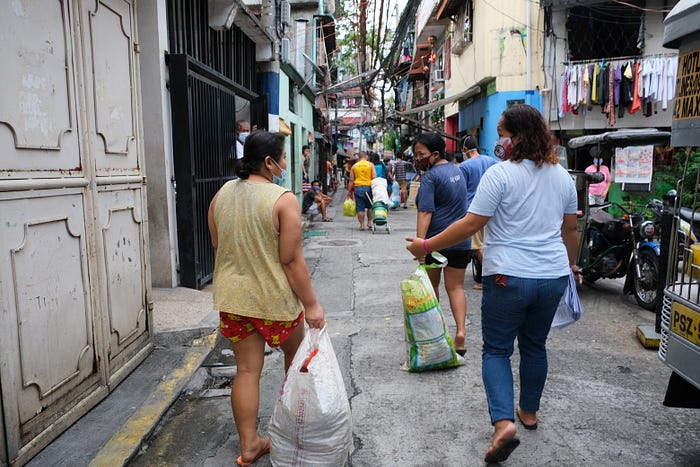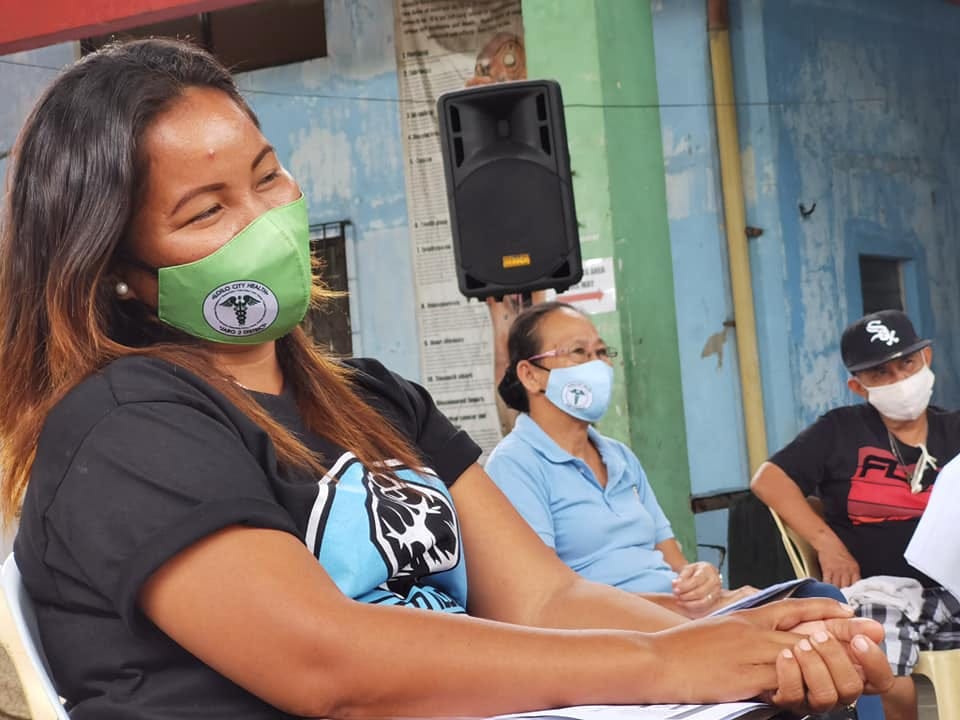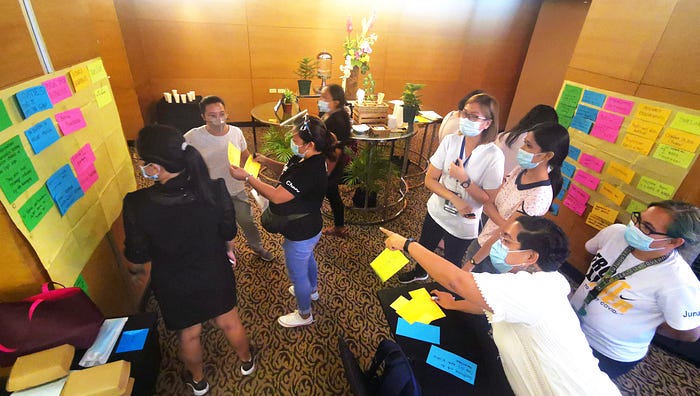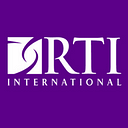From Hotspots to Bright Spots: Fighting COVID-19 in the Barangays of the Philippines

When COVID-19 hit the Philippines, health worker Maricel Cruz monitored the condition of suspected cases in her Manila neighborhood, Barangay 374.
It was summer and COVID-19 cases were surging in the Southeast Asian country. Low-income neighborhoods of large cities, like Cruz’s, were becoming hotspots.
“I experienced a lot of challenges because I was dealing with so many people…at first I was scared,” says Cruz.

The fear and misinformation that came along with COVID-19 only made her job harder. Cruz’s neighbor filed a complaint after seeing her remove personal protective equipment just outside her home. “Many people testified for me and helped me win the case,” says Cruz.
After an initial summer surge that made the Philippines the most heavily impacted country in Southeast Asia, the rate of new COVID-19 infections has generally been declining at the national level — but some communities still experience more widespread transmission than others. Slowing and stopping the spread of COVID-19 therefore starts with the hard work of people like Cruz in the country’s neighborhoods, called barangays.
To support their efforts, the USAID ReachHealth project acted quickly to help local governments fight the virus in 15 priority areas and hotspots throughout the country. USAID ReachHealth, implemented by RTI International, is a five-year project that strengthens and improves Filipino families’ access to family planning and maternal and child health services.
“We saw the drastic effect of COVID-19 when the government placed the country on lockdown in March. We tried to understand how the pandemic might hinder the continued provision of family planning services and eventually the country’s local response to COVID-19,” says Dr. Laurentiu Stan, USAID ReachHealth Chief of Party. “Leveraging our already-established relationships and local knowledge, we helped local governments identify and enact solutions to hinder the spread of COVID-19 in some of the hardest hit areas.”
Fortifying the frontline
As a key part of its response, USAID ReachHealth helped local governments strengthen Barangay Health Emergency Response Teams (BHERTs) in priority areas.
BHERTs form the frontline of efforts to delay COVID-19’s spread and locally contain the pandemic. They communicate risk, facilitate contact tracing and quarantine processes, tackle stigma associated with being COVID-positive, and connect communities with broader health systems.


When a rapid assessment showed that the presence and functioning of BHERTs were highly uneven in communities, the project worked to ensure BHERTs in hotspot communities were active and effective. USAID ReachHealth provided training on elements of the COVID-19 community response, including risk communication, infection prevention and control, adolescent and reproductive health, gender-based violence, contact tracing, and quarantine protocols. Local leaders received similar training since their support was critical to success.
Cruz was the first BHERT member in Barangay 374. Now, she’s part of a team — and the last recorded case of COVID-19 in her area was on October 21st.
“If people have symptoms, they now know how to follow the quarantine procedures,” says Cruz. “They listen to our Barangay Chair and other colleagues have learned so much during this pandemic.”
So far, USAID ReachHealth has supported the training of more than 4,000 BHERT members from selected areas across the Philippines.
Assessing and aiding contact tracing efforts
Contact tracing is one of the most essential activities for fighting COVID-19 at the barangay level.
Ahannah Joy Marquez is a 30-year-old nurse and contact tracer in Davao City, Mindanao, a group of islands in the southern Philippines. Marquez interviews and advises close contacts to COVID-19 patients — in addition to her day job providing family planning and maternal and child health services.

When the District Health Office informs Marquez of a positive case, she coordinates with health workers and local leaders to enact local quarantine measures. She also interviews the patient, going through questions to help them remember the details of where they have been in the last 14 days.
“It takes me 10 to 12 hours to fully complete the tracing in a day,” says Marquez. “I am too tired at the end of the day and cannot even play with my children.”
USAID ReachHealth assessed contact tracing efforts in six COVID-19 hotspots, showing the need for improved trainings, including how to deal with fear and misinformation; enhanced tools, such as those for data management; and more resources, for essential needs like transportation and phone calls. The project is helping fill some of these gaps, including by supporting data management systems and facilitating connections with BHERTs so these teams can support contact tracing efforts with their local knowledge.
Partnering for sustainability

To further assist community-led COVID-19 response efforts, USAID ReachHealth recently supported microplanning exercises in 46 barangays in seven cities and provinces. In each barangay, the exercise brought together all levels of the COVID-19 response — from community workers like Cruz to local government officials — to understand how national COVID-19 plans and policies could be applied locally and how each stakeholder could best fill gaps in the local COVID-19 response.
In some cases, USAID ReachHealth stepped in to respond to identified needs. In Barangay 374, for example, the project supplied contact tracing materials, personal protective equipment, and a communication allowance to Cruz and her colleagues.
And to facilitate the sustainability of its support to barangays, the project partners with a range of local government partners and local civil society organizations.
In Visayas, a group of islands in the central Philippines, USAID ReachHealth works with Bidlisiw Foundation, a civil society organization founded 31 years ago to protect vulnerable people, particularly children.
“At the beginning of the pandemic there was a difference between what was on paper and what could happen on the ground,” says Lolita Ganapin, Bidlisiw’s Executive Director. “We acted as a bridge, helping officials understand what would be practical in the barangays.”
Bidlisiw and USAID ReachHealth worked together to train BHERT members in 10 barangays in Visayas. The project provided Bidlisiw with reference materials and tools to standardize their trainings. And when project support for COVID-19 ends in January 2021, Bidlisiw will still be present in the barangays. “Working in the community, our door is always open,” says Ganapin.


The work continues
BHERT members, contact tracers, frontline health workers, and local organizations are important pieces of the puzzle when it comes to fighting COVID-19 at the community level. But local government and health officials, local leaders, and law enforcement officials are all working incredibly hard to fight COVID-19.
“It is exhausting, but I look forward to the day…when I could have more time with my family and be able to play with my children without the worry,” says Marquez. “For now, we continue to do the work.”
Cruz says she finds inspiration in daily successes that make a difference in her neighbors’ lives.
“Sometimes, 80% of my life is devoted to serving the Barangay…But I am happy because every time I finish my job — assisting those who finished the quarantine get their clearance papers — I get surprised when they thank me for the help I extended to them.”
Learn more about other aspects of USAID ReachHealth’s response to COVID-19 in the Philippines including communications initiatives to address adolescent health and gender-based violence; the provision of personal protective equipment; and efforts to improve water, sanitation and hygiene.
